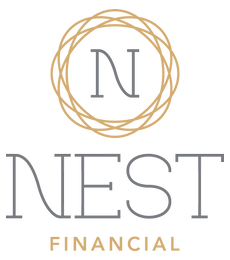If the blazing temperatures weren’t a strong enough reminder that June has arrived, allow us to give you a mid-year wake-up call.
It’s hard to remember New Year’s Eve when simply checking your mail generates enough sweat to warrant a shower and your cloth upholstery burns the backs of your legs whenever you get into the car, but let’s flex our imaginative muscles for a moment.

You were probably toasting champagne, wearing something sparkly, and reflecting on 2020’s successes and challenges. At some point, you probably set some resolutions – and if you’re like most people, a couple of them were financial.
The middle of the year is a good time to pause and check in – are you keeping the promises that you made to yourself in January? There’s nothing wrong with adjusting your plans, but if you’re starting to feel annoyed by this article, there’s a good chance that part of you subconsciously knows that you could be treating your financial intentions for 2021 with a little more respect.
Below, NEST has compiled some tips for assessing your financial situation, and some questions you might want to ask yourself to make sure that you’re handling your finances efficiently.
To get a sense of where you’re at financially, you can compare two things:
- Your balance sheet, otherwise known as your “net worth statement,” or what you’ve got and what you owe
- You Cash Flow Statement, or how much money you’re earning and spending
Balance Sheet
The balance sheet contains your Assets (what you’ve got) and your Liabilities (what you owe). You can group your assets into three categories:
- Cash / Cash equivalents (checking and savings account, money market funds, certificates of deposit)
- Invested Assets (stocks, bonds, mutual fund and retirement accounts)
- Personal Use Assets (home, car, yacht, and other personal property)
Your Liabilities can be split into two groups:
- Short-term (auto loans, credit card debt)
- Long-term (mortgage, some educational loans, home equity loans)
Cash Flow
This one is pretty simple, and can be represented by two columns: inflow, and outflow. What you make, and what you spend.
Inflow includes your monthly or yearly income, and be sure to include all your sources: wages, but also rentals and investment income, for example.
Outflow represents all your expenditures, and can be divided into two subtypes:
- Fixed (values that don’t change month-to-month): your mortgage, your insurance premiums, etc.
- Variable (values that are not the exact same each month): food, entertainment, hobbies, etc.
If you want to get super advanced with it, you can also put your taxes in a separate category.
Of course, most people would only give the A+ gold-star to a Balance Sheet and Cash Flow with assets outweighing liabilities and inflow exceeding your outflow. There are a myriad of reasons why this might not be the case and that’s OK, but awareness of your financial situation regardless of what it might be is crucial.
Some things to consider…
No one likes to think about how time is slipping away, and we exist here on Earth for but a moment, the blink of an eye – but unfortunately sometimes we have to buck up and face the cold hard fact of our responsibilities. Here are some financial things to think about as you pause for this mid-year check-up. If you want to pour yourself a stiff drink first, we understand, and encourage it.
- “An old will is better than no will,” but an updated will is, of course, the best kind of will. Make sure that you’re periodically updating yours to ensure your loved ones will be taken care of in a worst-case scenario.
- In the same vein, ensure that your retirement accounts are updated with beneficiary designations and personal and group insurance policies.
- Consider starting a college savings plan to invest in future education.
- Build your savings up outside of retirement so that you have a “freedom fund” and don’t have to live paycheck-to-paycheck, or close to it.
- Watch our most recent NEST Edge webinar to learn more about inflation and why you shouldn’t let your freedom fund be the only investment you make in your peace of mind!
- If you have a business, make sure that your insurance is updated and you have a succession plan in place.

- Look at your short and long-term goals – a special vacation, or an investment in one of your personal assets, or purchasing a home – and calculate how much money you can set aside each month to achieve them.
- Don’t have any short or long-term financial goals? Make some! Retirement planning is never a bad place to start.
There – we’re done! That wasn’t so painful was it? Financial planning can be exhausting, overwhelming, and stressful, but in the long run it’s way better than being blindsided by your finances or unaware of what your money could be doing for your lifestyle and future. Check out our Financial Planning Services to see how NEST can help you simplify, streamline, and optimize your financial planning process. Now get out there and enjoy all the sun and water that Austin has to offer!
DISCLAIMER: We are legally obligated to remind you that the information in this article is for educational (and entertainment) purposes only. This is not personalized financial planning advice. For guidance about your unique goals and situation, please reach out to us at info@nestfinancial.net.





